St.
Simons Island, Georgia
St. Simons Island captivates visitors with remarkable beauty and fascinating
history. Historic remnants of bygone eras dot the island including Ft. Frederica, Christ
Church, Lighthouse Museum and the sites of ante-bellum plantations. Treasures
are found 'round every bend on this the largest of The Golden Isles.
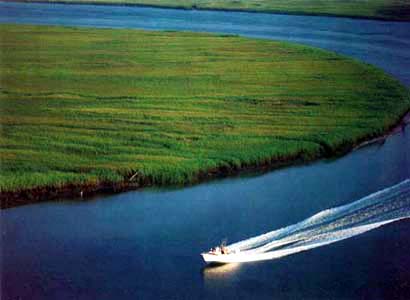
The Marshes of Glynn
"...By a world of marsh that borders a world of sea. Sinuous southward
and sinuous northward the shimmering band of the sand beach fastens the
fringe of the maIn the 1870's, Georgia poet Sidney Lanier was inspired
to write The Marshes of Glynn as he stood and beheld the vast marshlands
that embrace The Golden Isles. These marshes are undoubtedly
one of the area's most remarkable sights.
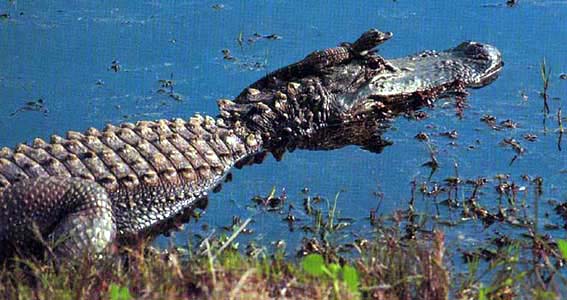
American alligators can be seen in many lagoons on the islands.
This baby alligator stays close to
its mother to avoid birds of prey. While fun to watch, caution is advised.
Fort Frederica National Monument
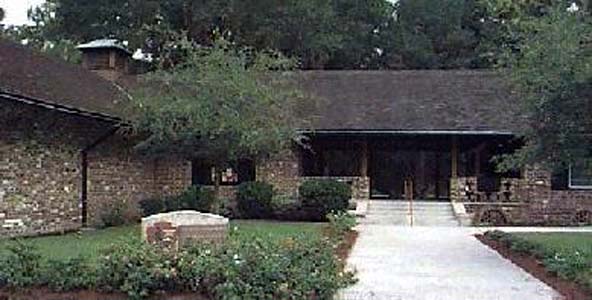
National Park Service Visitors Center and Museum
Click here for more information
on the Visitors Center
All but lost to time and a wandering river, Frederica today barely resembles the extensive military town that once flourished on this site. Between 1736 and 1749 the fort here and its regimental garrison were the hub of British military operations along the Georgia frontier.
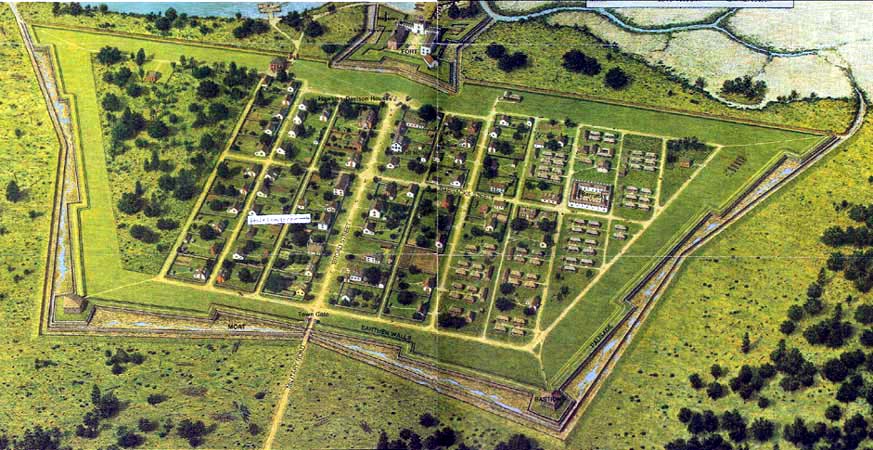
In this illustration, artist L. Kenneth Townsend portrays Frederica in
the pivotal year 1742 when Oglethorpe's troops defeated Spanish troops
at Bloody Marsh. Of all his settlements in Georgia, Oglethorpe liked
this one best. He was fond of the town's military air and proud
of his troops who "made as fine an appearance upon the parade as any Regiment
in the King's service." Like Savannah, Frederica was a planned town. It was a thoroughly
English town, with
spacious streets and substantial houses built in the Georgian style.
An admiring traveler described the scene for the London Magazine
in 1745: "Some houses are built entirely of brick some of brick and wood,
some few of tabby work; but most of the meaner sort of wood only."
We started our tour at the bottom of the drawing on the military road
which was more a path cut through the forest than a road.
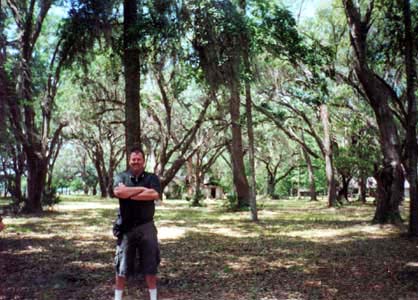
Dave under the beautiful live oak trees.

Out to the east we could see the Barracks.
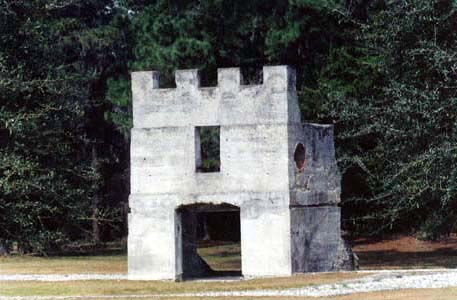
The Barracks housed most of the several hundred soldiers garrisoned at
Frederica. Other soldiers lived nearby in Palmetto thatched huts.
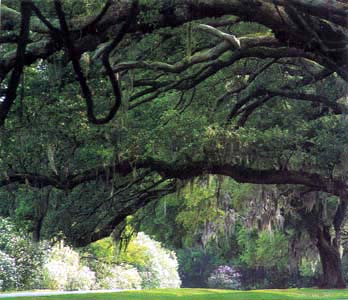
Visitors are invariably captivated by the beautiful and natural canopy
provided by the countless live oaks that grow for so long and so large
in this area. So named because their deep green leaves retain their
color throughout the year, live oaks are known for the enormous size and
vast networks
of twisting, winding limbs. While many trees in this are are much
older, legend holds that the
average life span of an oak is 300 years - 100 years of growth, 100 years
of mature existence,
and 100 years of decline.
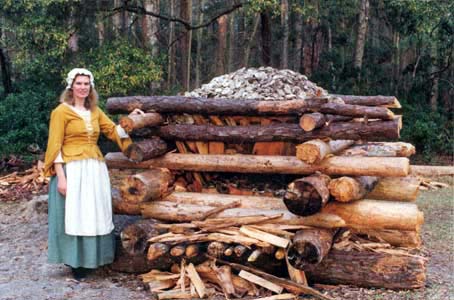
This is a pine kiln to burn oyster shells for building construction.
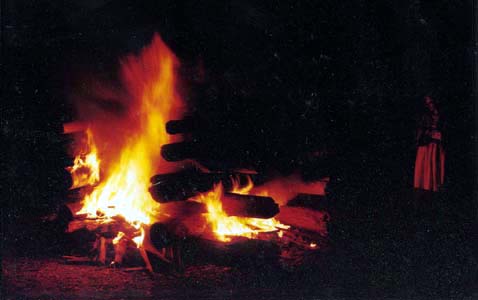
During lime burning, oyster shells are subjected to very high temperatures.
The resulting
lime is combined with water, sand and more whole oyster shells to form
"tabby", a masonry mixture used for building construction at Frederica.
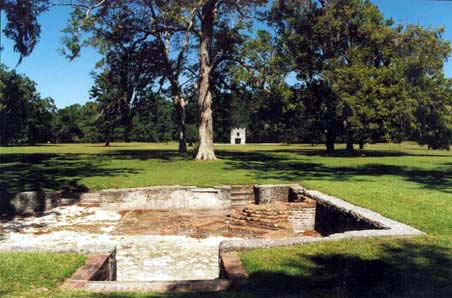
Lot 4 North - The three-story John Calwell House was the best dwelling
in town.
John Calwell made candles and soap here and his wife kept a shop.
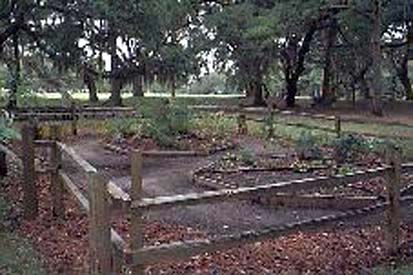
An Herb Garden
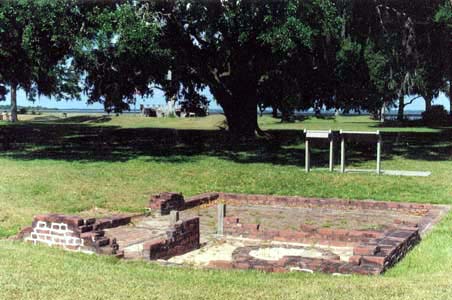
Lot 21 North - Francis Moore, Frederica's first town recorder and the
keeper of the King's
store, also became James Oglethorpe's personal secretary. He toiled
to enhance his town lot, building one house of wood and another of brick.
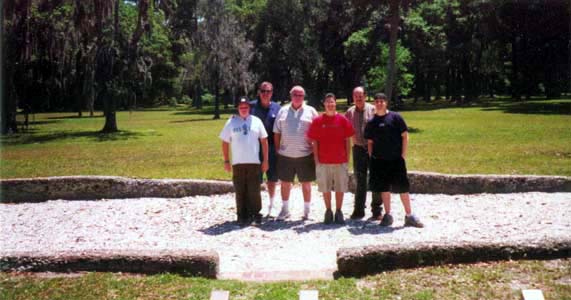
Lot 8 South - Left to Right: Ben, Dave, Chuck, Tommy, Bruce and Philip Holtzendorff
Dr. Frederick Holzendorff was a surgeon's mate to the Regiments,
who had been in Frederica at least since December 1741. He lived
here with five children and nine servants.
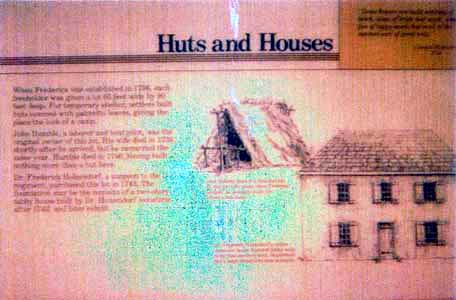
When Frederica was established in 1736, each freeholder was given a lot
60 feet wide by 90 feet deep. For temporary shelter, settlers built
huts covered with palmetto leaves, giving the place
the look of a camp.
John Humble, a laborer and boat pilot, was the original owner of this
lot. His wife died in 1736,
shortly after he arrived but he remarried the same year. Humble
died in 1740, having built nothing more than a hut here.
Dr. Frederick Holzendorf, a surgeon to the regiment, purchased this lot
in 1743. The foundation may be the remains of a two-story tabby
house built by Dr. Holzendorf sometime after 1743, and later rebuilt.
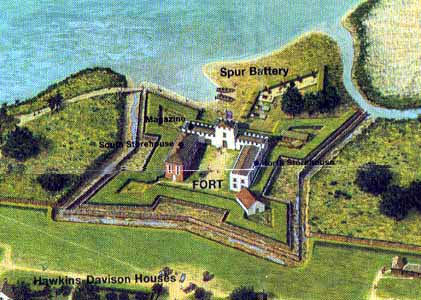
The tabby fort on the Frederica River guarded the twisting water approach
to the town. The fort was square with bastions on each corner and
separated from the town by a palisade of earthen walls and a moat.
Inside were a magazine for guns and ammunition, officers' quarters, storehouses,
and a forge. A spur battery, lost long ago to the river, mounted
six or seven cannon.
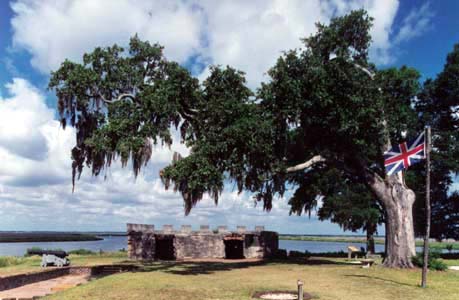
The remains of the fort on the Frederica River.
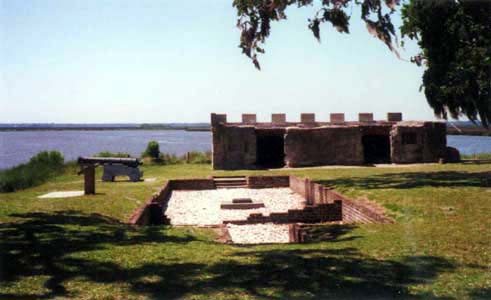
The fort on the Frederica River.
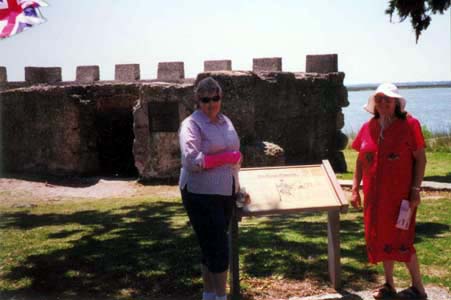
The fort's magazine
Left to Right: Rae and Debbie
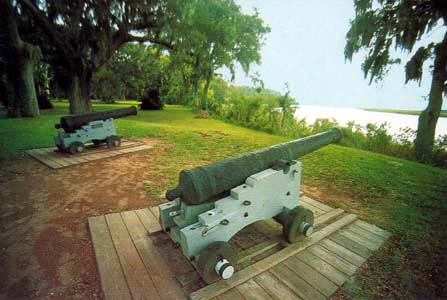
The spur battery with cannons.
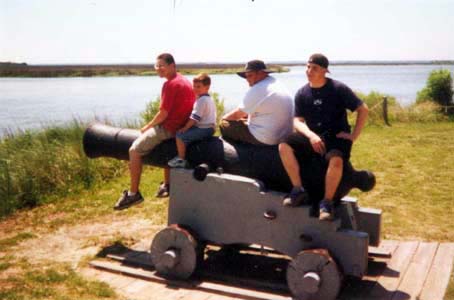
Left to Right: Tommy, Garrod, Ben and Philip
Return to Top
Web Hosting and Design by
Deborah Holtzendorff
©Copyright 2000